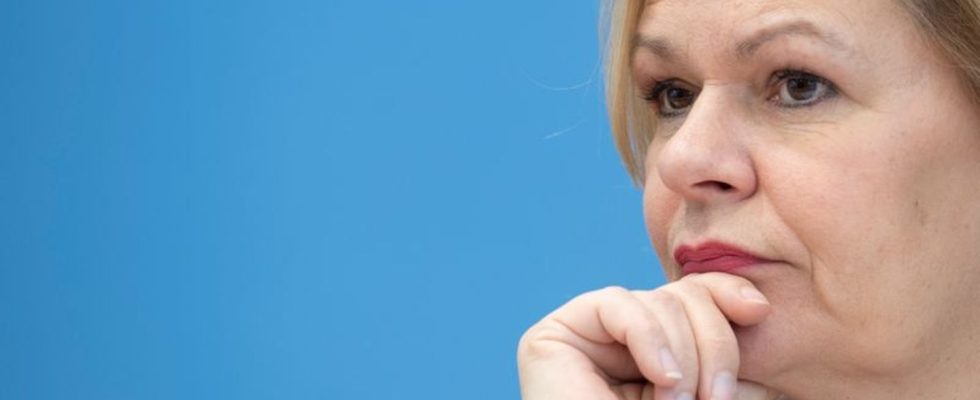irregular migration
Faeser extends border controls to Austria
According to Nancy Faeser, Germany was again the main destination country for irregular migration in Europe last year. photo
© Paul Zinken/dpa
Federal Minister of the Interior Faeser justifies this with irregular migration. Denmark, on the other hand, takes a different approach at the German-Danish crossings.
The stationary border controls at the German-Austrian land border are to be extended by another six months. This emerges from a letter from Federal Interior Minister Nancy Faeser (SPD) to the EU Commission, which is available to the German Press Agency. It states that no sustained decline in irregular migration to Central and Western Europe is to be expected in the foreseeable future.
“It is worrying that in 2022 there was a peak in irregular migration detected at the EU’s external borders since 2016,” the letter said. Germany was again the main destination in Europe last year.
In view of the increasing number of migrants, the accommodation situation in German federal states and municipalities has become even more difficult. Faeser therefore sees himself forced to order internal border controls for a further six months on the main route of irregular migration to Germany, effective May 12.
Germany has controlled the border with Austria since 2015
Actually, there are no stationary identity checks at the borders in the Schengen area, to which 26 European countries belong. In recent years, however, several countries have used an exception and partially reintroduced border controls. Germany has been controlling Bavaria on the border with Austria since autumn 2015 after tens of thousands of refugees and other migrants made their way from Greece to Western Europe via the Balkan route.
The police union (GdP) criticized the fact that the border should only be controlled in a stationary manner, for example on the motorways. This has a “high transparency for the other person”, said the chairman Andreas Roßkopf of the Bayern media group. The GdP had called in vain for flexible and mobile controls that were more effective against illegal migration.
The parliamentary group leader of the Bavarian state parliament Greens, Katharina Schulze, called the extension wrong. She called for a “contemporary approach to one of the greatest achievements within Europe: the freedom to travel in the Schengen area” and said: “In order to really get more security, we need more cross-border police cooperation, event-related priority checks and more police officers within our country. “
In her e-mail to the Commission, Faeser writes that she supports the joint efforts at European level to do everything possible to preserve the border-free Schengen area. For this it is necessary, for example, that the member states receive suitable instruments for better control and management of migration at the European external borders. Reliable registration and recording at the external borders are planned. But: “As long as these have not yet been decided and implemented, there is a risk for the Schengen area with open internal borders,” said the interior minister.
Denmark relaxes controls
Denmark, on the other hand, wants to relax controls at the German-Danish border crossings from mid-May. Instead of entry controls, the police want to focus more on fighting cross-border crime in the future, as the Danish Ministry of Justice announced. Commuters or vacationers from Germany, on the other hand, should be checked less frequently.
The changes will come into effect on May 12 and are provisionally scheduled to last until November 11. The border controls to Denmark’s other neighboring country Sweden should be completely eliminated during this time. The fact that the border controls with Germany are temporarily maintained was justified by uncertainties caused by the Ukraine war, a continuing serious terrorist threat, a threat from foreign secret services and the migratory pressure in Europe.

